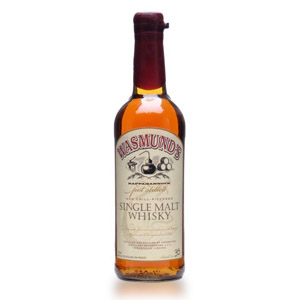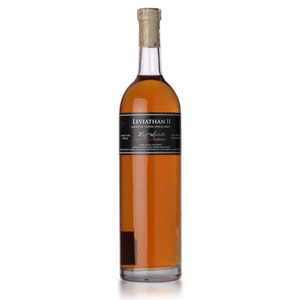
Ahh, “smooth”. Spirits aficionados react to the word the same way just about everybody reacts to the word “moist”: with visible discomfort and a quick change of subject. Coined by some college kid somewhere, no doubt, the word is generally used to refer to a high-proof spirituous beverage that does not make the drinker gag or cringe when shooting it. Hardly a ringing endorsement, yet it’s often employed as the default compliment for any drink foisted onto a person by a well-meaning friend.
This college-kid mentality is easy to understand, however; After four (or five? Or six?) very long years of being forced to drink shots of the cheapest (read: worst) possible booze, one could be forgiven for holding “doesn’t make me gag” up as the pinnacle of achievement in spirits craftsmanship. Indeed, this one (of many) attributes of quality liquor is probably the first thing that attracts the newly-minted spirits lover into the wonderful world of good booze.
It takes quite some time and experience before one begins to mentally separate alcohol “heat” from low-quality “roughness”, which are often both confused to mean “not smooth” in the collegiate vernacular. In other words, a high-quality well-aged single malt can be a fiery 70% alcohol (140 proof), which could rightly be described as “very hot”, and yet not result in that spine-shuddering, head-shaking, eye-squeezing, throat-tearing sensation that plagued your university years. Conversely, the cheapest $10 handle of vaguely Russian-sounding vodka can be watered down to 30% ABV (quite the opposite of “hot”) and still be awful to shoot. My stomach turneth over at the very thought.
So what causes things to be “smooth” or “rough”? While there are likely several very scholarly works on the subject, this isn’t that kind of blog and you’re simply going to have to go with what I dredged up from the Internet. Just be glad I passed on (most of) the memes, and take my advice and never Google Image-Search the word “smooth”. While we’re on the subject, never search “moist” either. Just don’t do it.
I’m going to categorize the things that lead a drink to be “smooth” into three categories: 1) Craft, 2) Additives, and 3) Technique.
Craft
The most noble way to make a drink “smooth” comes down to the craftsmanship of its production. If quality ingredients are distilled skillfully in quality stills and aged in quality oak barrels for a sufficient quantity of time, one can expect a degree of “smoothness”. This is due to several factors: alcohol by-products formed by the fermentation of sugars (or starches that are malted into sugars) contain some nasty stuff in low quantities that is concentrated during distillation. These “heads” and “tails” are removed by the still operator. This is referred to as the “cut”, and a skillful “cut” can remove the worst offenders while leaving in the best flavor and aroma compounds. A “wide” cut which leaves more of this stuff in can reduce the costs of production, but also keeps the shudder-inducing flavors of industrial oils, bitter grassiness, solvents and adhesives, and rotting fruits. Note that cuts only really apply to pot stills, while most spirits (especially most of the cheaper spirits) are made on a continuous column still. The “cuts” are a lot more complicated and technical with a column still, and involve adjusting the plates inside the still. Suffice it to say a column still is still capable of making cheap booze with off flavors, even without wide cuts. When spirit leaves either type of still, it naturally has a number of off-tasting compounds which can be removed or converted by a number of procedures. Filtering through charcoal or other media can do this (hence the proliferation of the word “filtered” on every vodka label, ever), as can aging in oak (the voodoo of oak maturation is a subject for another time, but oak both filters and converts off-flavors into tasty ones while simultaneously adding its own compounds). Running the spirit through a still such that it comes into contact with a lot of copper also removes off flavors such as sulphur by binding them with available copper ions. You want copper sulfate to stay behind in the still, not show up in your bottle.
Additives
It turns out that in the pursuit of the “Fake ID” market, alcohol producers have a number of options of additives to simulate the “smoothness” of more-expensive products, without resorting to the age-old, inefficient, and costly maturation in oak. First and most obvious is water. Most spirits in most countries have a legal definition that requires them to be at least 40% alcohol by volume (ABV), and this is achieved by the simple process of adding water. However, some legal definitions of things like “spirit drinks” or “liqueurs” allow lower alcohol concentrations, and thus more “smoothness”. As we discussed above, high ABV does not necessarily translate to roughness, but if the spirit is cheaply made and/or unaged, water will certainly help. The second additive is sugar. Sugar does a great job of masking off-flavors (just look at the nutrition label on any processed food) and is cheap. Pre-mixed drinks, liqueurs like triple sec or schnapps, and many flavored vodkas or whiskies contain sugar along with the flavorings for this reason. A third common additive is glycerin. Glycerin is a “natural” byproduct of soap making, and although it is colorless and flavorless, it adds “body” to drinks and softens rough flavors, which tricks tastebuds into thinking the spirit is “smooth”. Most drinks with legal definitions (like single-malt scotch or bourbon) cannot contain added glycerin or other additives, but other, cheaper, drink categories can.
Technique
Lastly, the way in which you drink your spirits can affect your perception of “roughness” or “smoothness”. Ice is an obvious example. “Well” vodka at many watering holes is one of the cheapest, nastiest distillates you can find, yet chill that poison down via vigorous shaking with ice and add a drop of vermouth and it can be palatable (notice I didn’t say good). Of course, the adding of mixers (usually containing sugar) is the trifecta of smooth-making… uhh… -ness: Sugar to sweeten, water to dilute, and strong flavors to mask. Finally, avoiding the shot itself can help turn a “rough” spirit into a “smooth” one: sip the liquor, hold it in your mouth for several seconds while your powerful saliva enzymes work on it and it anesthetizes your tongue, and then swallow it. For more, see my article on How to Taste Scotch (or whisky).
Regardless of what occurred between grain and shot glass, you should be warned that the term “smooth” will get you nowhere with the snootier whisky-appreciating crowd. Considering the myriad ways that spirits can become “smooth”, and the fact that most of them either involve adulterating the original ingredients or removing good flavors and textures along with bad, the term is frowned-upon by the aforementioned snoots. “Adding water and ice to ‘Jack makes it smooth too”, they might say, or “so are wine coolers” (ouch). Putting aside the fact that saying something like that immediately makes a person into a giant jerk, if you’re still using “smooth” to describe whisky, you might want to reconsider in certain crowds. Yes, that 30 year-old whisky is indeed smooth, but you might want to go with “supple”, “creamy”, “silky”, or “soft” (thank you Thesaurus.com!), if only for appearance’s sake.





Talisker Storm is a thing I’m bitter, not smooth, about (teehee) since, as often as not, it costs more than the gold standard 10 yo, yet is obviously of far inferior quality. And I thought about it the whole way through reading this very informative article.
Storm is a single malt, which means that there is no column still leaving abrasive compounds in the final product. It’s likely made from the same malted barley as Talisker’s other products, and aged in the same oak barrels. So we’re not really talking about sub-par materials or workmanship. That basically leaves insufficient time in the wood for the oak to work it’s magic as the culprit for the distinctive roughness of that spirit, and possibly – as you mentioned – taking a wider cut from the runoff of the still. Kudos to ScotchNoob, as I had never really factored that possibility into the equation before.
Based upon rumors I’ve read elsewhere on the internet, I’m inclined to credit insufficient time in the barrel as the reason why Storm disappoints.
Yup, I would agree. Talisker Storm is one of those examples of “when NAS goes bad” – whisky with an irrelevant name, selling for parity with age-statement-labelled whiskies, but of inferior quality due to inclusion of younger (and possibly substandard quality) casks. Note that oak barrels do have variation in quality beyond age-of-use: A barrel can only be re-used a certain number of times before it fails to perform well (and requires MUCH more time to have a mellowing effect). Also, wood grain and lumber treatment (drying) and other factors that I don’t understand can lead to barrels that just don’t make top-quality whisky. In the past these would have been sold off to blenders or independent bottlers, who would try to salvage them by finishing in other casks or extra aging or just dump them into cheap blends. Nowadays many of these barrels are ending up in major brands due to extreme demand in the market for single malts.
I’ve said before that you should review Storm, and I still think so. Not because it is good, but because it is not, and people considering dropping $80+ on a bottle deserve to know.
You blog is a good one, and usually appears pretty close to the top of Google search results for any bottles you’ve reviewed. Maybe a bad review by the almighty ScotchNoob can save some drinker a bad purchase, and who knows: enough people taking a pass might get a bad bottling withdrawn from the market entirely. I do believe that even corporate behemoths like Diageo are sensitive to this sort of “bad press”.
Yes, it could easily be argued that a review that steers someone away from a bad product is as valuable as one that steers someone toward a good one, if not more so; regardless of how many good ones they buy, only bad whiskies (however defined) actually rip people off. In the larger sense, it is a mystery how we are going to get better products if people don’t discuss the current bad ones – or at least discuss/debate what they are.
On the topic of “smooth”, one of the main issues with it might be that it essentially has no definition and so is basically meaningless. I would normally think of it in terms of eveness of arrival, palate and finish (and not in a shooter context) or in terms of how well behaved the column spirit is in various blends (as opposed to rough and spirity) and, even in that, it might still have broad application to other spirits/beverages. Others might look at it differently, but if smooth is just generally an absence of flavours/effects that one objects to in whisky, it doesn’t really say very much in itself – like “good”, it often needs a lot more context.
SN could do a whole series on meaningless words in spirit marketing. “Cask Strength” is subjective, but usually implies an ABV of 52% or higher. Yet we are now seeing whiskies marketed as “Batch strength”. What does that even mean? And don’t get me started on wishy-washy nonsense like “specially selected casks” or “hand-selected casks” or “rare” or “Old” as a stand alone word in place of an age statement.
Storm is already priced to clear at ~$40 at most places I frequent. I think its days are already “numbered” (†).
—
†Yes, that is a geeky and barely-funny pun on NAS whiskies and their industry cheerleaders.
I thought it was funny. And I’ve started noticing it being marked down, too. But I’ll never stop begrudging the $90 I dropped on a bottle once
Here’s a good article on oak:
http://whiskyadvocate.com/why-and-how-oak-matters-in-whisky/?utm_content=bufferbfb70&utm_medium=social&utm_source=twitter.com&utm_campaign=buffer
“Oak’s contribution to maturation is commonly reduced to a single number on a label: how many years the whisky spent in the barrel. Yet lost in the mess of age statements or the increasing lack of them is that the species of oak, its region of origin, the nuances of its treatment including seasoning, toasting, and charring, and even the specific tree itself all contribute to the beauty and diversity of whiskies currently being bottled up and poured down.”
Ah, so did providing age information somehow previously prevent producers from giving us all that information on oak that THEY never gave a shit about providing before UNTIL it became something to talk about INSTEAD of age? It’s all clear now.
It’s amazing how it’s now all about the lumber and not about the time spent in it – follow the bouncing dollar. In theory, I guess, if you could find the perfect oak, you wouldn’t need casks – just run the product through a sluice and bottle it at the other end.
I’m certainly looking forward to WA’s companion piece: Why And How Age Matters In Whisky. Should be informative.
I appreciate your rage against the NAS trend. I know of a few good NAS whiskies, and a lot more bad ones. I don’t buy them, and I wish more people would vote accordingly, with their wallets.
I appreciate the comment and the sentiment. No matter how much of an internet parlour game people want to make out of NAS, they should indeed realize that this nonsense will continue until they take concrete, and sales-based, steps to stop it. Quality, whether real, redefined, or simple industry sales hype, is no excuse for what’s going on and no one is going to talk NAS to death.
I’m as much of a nerd for whisky as the next guy (who also comments on whisky blogs), but I, for one, have NO interest in getting somewhere with the “snootier whisky-appreciating crowd.” Let us not miss the Noob’s most important point here: “Saying something like that immediately makes a person into a giant jerk.”
Is the word “smooth” typical of inexperienced spirits drinkers? Yes. Is there anything inherently wrong with it? No. Is its association with said newbies 100% of the reason that grizzled old vets (or, at least, the jerkier ones) disparage it? Yes!
Sure, “smooth” doesn’t carry a lot of specific meaning. And I’ve heard jerks lambaste the word because “it’s not something you can taste.” And yet, nobody’s getting their knickers in a twist over words like “refined” or “beautiful” or “elegant” or any other soft descriptors that encapsulate the overall experience rather than pinpointing certain elements of it.
In conclusion, people who rag on “smooth” are jerks and nobody should alter their behavior to appease them.
Totally agreed. I tried to walk a fine line between disparaging the word (which is, as you say, harmlessly meaningless) and giving the “grizzled vets” credence. As much as it’s commendable to avoid the jerks who would look down on people who use the word, sometimes it’s either unavoidable or undesirable to “put yourself out” of that particular inner circle, as noxious as it can be. My goal here is just to give newbies some understanding about how others see the word.
Yeah, for sure. Good stuff.
Newbies should understand why a jerky snob might look down on their use of the word. They should also have some ammo in-hand in case they want to continue using it.
I tend to adjust my choice of vocabulary based on my audience. Maybe it’s just the teacher in me. Most of my friends aren’t whisky enthusiasts, so I try not to bore them with descripters. I stick to “sweet” “smoky” “fruity” “spicy” and, yes even “smooth” at times.
Yeah, I agree with that, Joel—despite what I said a couple posts up, which mighta been a little too fiery.
So, to echo you a bit and say now what I shoulda said above: “Newbies should understand why a jerky snob might look down on their use of the word, SO THEY CAN DECIDE WHETHER TO CONTINUE USING IT. They should also have some ammo in-hand in case they want to continue using it.”
I don’t think that there’s anything wrong with “smooth” in and of itself, it’s just that people might need to explain what they mean by it. That explanation might, in turn, lead to some good discussion about the whisky, but “smooth” has become such an easy and ready synonym for “good” in whisky that more info is needed if it is intended to mean anything beyond good. For me, “smooth” would usually be more about a whisky’s structure than how it tastes – a distinction that, in itself, might need explaining. Ralfy once did a brilliant piece on this – reviewing a whisky in terms of its structure instead of taste descriptors, but I haven’t been able to find it again by searching YouTube.
Then again, it’s all relative: those who have a more sophisticated take on whisky than I do must be pretentious jerks, while those who have a less sophisticated take on whisky must be idiots – just like everyone I “have” to pass on the road are Sunday drivers trying to create an accident, while everybody who passes me on the road is a crazy maniac.
I have had the distinct pleasure over the last year of introducing an Asian friend to whisky. Her English is good, but she had zero experience of drinking spirits, so the adjectives we use do in fact include “smooth”. 😊 The first few times she sampled a dram she looked at me in astonishment and said, “I can’t describe what I’m tasting!”
I suggested she translate from her own language but she said, “I can’t describe it in any language! I don’t know how to think about it!”
This has been an eye-opening and valuable experience because I have been unable to fall back on old tropes or shared references/prejudices as I would drinking with a fellow whisky enthusiast. I believe I have learned almost as much as she has, revisiting old favourites and explaining why I like them. Sometimes I find little to justify my previous infatuation. I remember passing her a glass of Singleton and saying, “Lovely”.
She sipped it and replied, “Normal!”
Unfortunately, my friend is heavily biased towards Peat Monsters. I am a soft, sherried guy! So I have learned to appreciate Uigeadail, Port Charlotte et Al. For the next phase, I am determined to get her to appreciate the sweeter, softer side of single malt.
If you have a bad whisky, you can improve the taste. Get a quart jar cut some granny smith apples up in thin slices and fill jar 3/4 full. Add your bad whisky to jar and seal for 7 days. After 7 days your bad whisky will be good whisky, try it and see.
I find it interesting that while the oak barrel cask is given credit for much (or most) of the “taste” imparted to “scotch whisky”, there is little or no mention of the role played by “peat” in imparting taste, and hardly any discussion about the role of “smoke” in imparting taste to scotch. What am I missing here? Are peat and smoke “secondary” tastes not worthy of discussion?
It’s hard to answer this question without a specific example, but it’s worth noting that peat and smoke (which are nearly always from the same source: peat used as a still heat source and/or to heat air that dries malted barley) are only found in a minority percentage of scotch whiskies available on the market. Find any discussion of a heavily-peated malt like those from Islay (Lagavulin, Laphroaig, etc.), Orkney (Highland Park), Skye (Talisker), etc., and you’ll see a lot of talk about peat and smoke and how they impact the whisky. Most mainland scotch is not peated at all, or contains such a low level of phenols from peat that they fade into the background and aren’t obvious to the senses. People tend to assume that because SOME scotch is smokey from the use of peat, that ALL scotch must be. Peat is actually kind of the exception (these days, anyway). It’s possible that scotch’s reputation for smokiness could be a legacy from years past before the advent of technology, when literally all scotch was malted with peat, and all stills were fired with it, but we’re talking about pre-industrial revolution here, so it’s not like anyone alive remembers that time. Cheers!
Little to no mention of peat?
What?!
Well you should have changed the name to whisky snob then 🙂
People should drink what they want, how they want and refer to their drinks the way they want (not everyone is a living thesaurus 😉 )
Since you boast as a expert of whisky by now you ought to know that people cam drink it the way they want and use the words they want to describe it.
Now of course there is a difference between a taster and a drinker since after some glasses it all goes away and the dram is either good or bad. So maybe someone just wants to get drunk and they will want to choose a ”smooth” one over a bad one or whatever the right term is according to you.
Times are changing my friend and whisky is not anymore for hardrockers or snobs. Everyone with some pocket change can have its own the way they want it and nor you or anyone else should impose they way to drink, describe or taste it.
This is my opinion maybe im wrong but it depends on many factors how I drink or feel about a whisky at certain times, you know just like with climate factors how a butterfly in the Amazon can affect it, so does that butterfly affect my dram.
Sláinte!
The post is interesting in describing how to make something taste smooth when it’s not, but I still have no real clue what “smooth” actually means when it comes to whisky. I’ve had some whisky that about made me gag, and I’ve had some wonderful whisky, and in considering how to describe the latter, “smooth” never came to mind – voluptuous, glorious, rich, bold, various other adjectives, but never “smooth.”